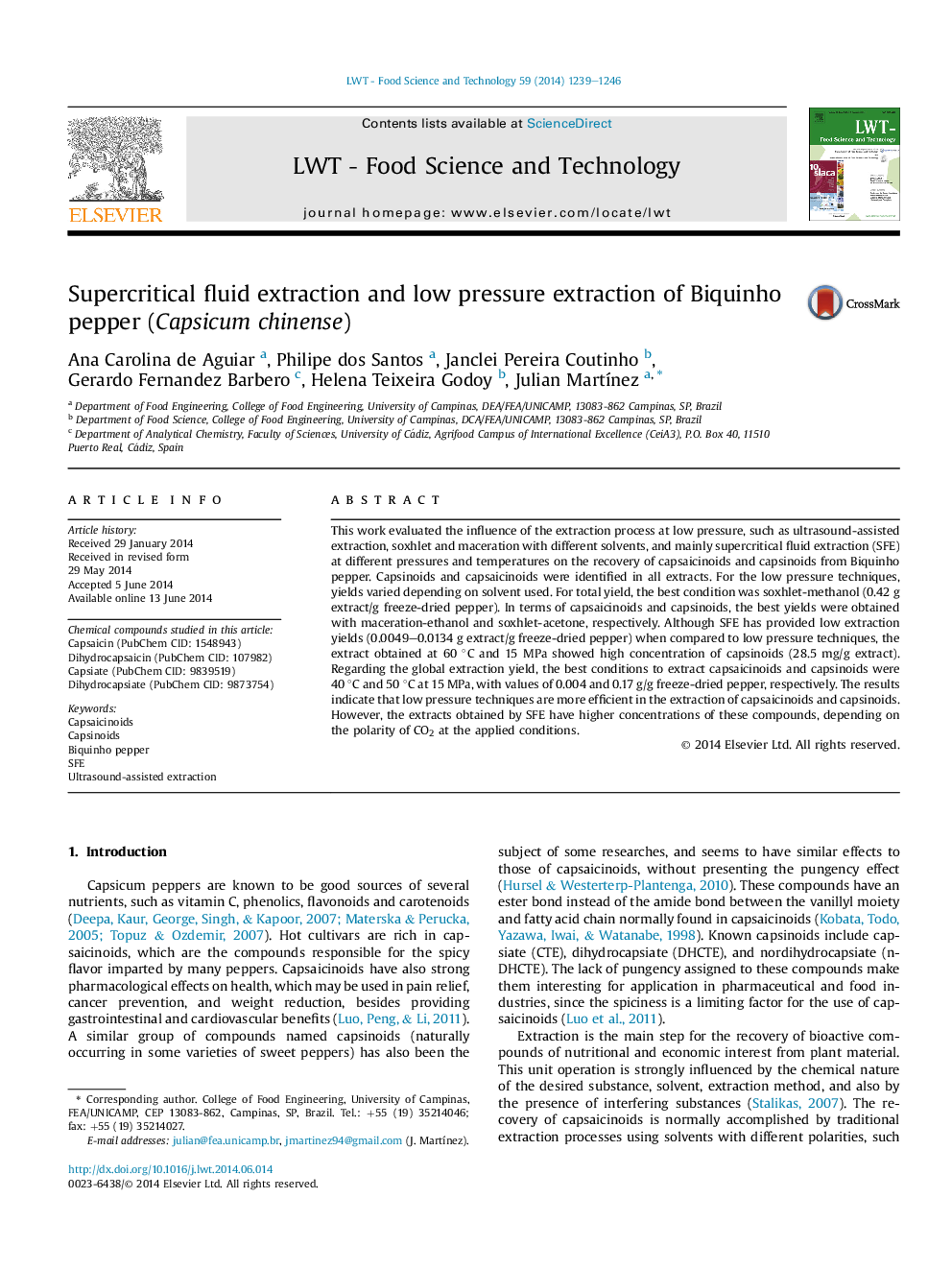| Article ID | Journal | Published Year | Pages | File Type |
|---|---|---|---|---|
| 6402751 | LWT - Food Science and Technology | 2014 | 8 Pages |
â¢Low pressure extraction methods and SFE-CO2 were applied to Biquinho pepper.â¢The influence of solvent and method on yields were evaluated for the low pressure extractions.â¢The influence of pressure and temperature on yields were evaluated for SFE.â¢In all extracts capsinoids and capsaicinoids were found.â¢The extract obtained with the lowest CO2 density had the higher concentration of capsinoids.
This work evaluated the influence of the extraction process at low pressure, such as ultrasound-assisted extraction, soxhlet and maceration with different solvents, and mainly supercritical fluid extraction (SFE) at different pressures and temperatures on the recovery of capsaicinoids and capsinoids from Biquinho pepper. Capsinoids and capsaicinoids were identified in all extracts. For the low pressure techniques, yields varied depending on solvent used. For total yield, the best condition was soxhlet-methanol (0.42 g extract/g freeze-dried pepper). In terms of capsaicinoids and capsinoids, the best yields were obtained with maceration-ethanol and soxhlet-acetone, respectively. Although SFE has provided low extraction yields (0.0049-0.0134 g extract/g freeze-dried pepper) when compared to low pressure techniques, the extract obtained at 60 °C and 15 MPa showed high concentration of capsinoids (28.5 mg/g extract). Regarding the global extraction yield, the best conditions to extract capsaicinoids and capsinoids were 40 °C and 50 °C at 15 MPa, with values of 0.004 and 0.17 g/g freeze-dried pepper, respectively. The results indicate that low pressure techniques are more efficient in the extraction of capsaicinoids and capsinoids. However, the extracts obtained by SFE have higher concentrations of these compounds, depending on the polarity of CO2 at the applied conditions.
